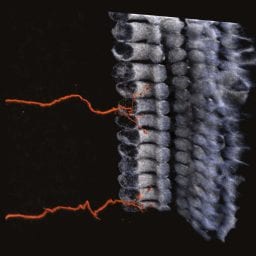Category: Uncategorized
Alex collaborates with Louise in the Segil Lab to compare the biophysical properties of reprogrammed and normal hair cells
https://elifesciences.org/articles/55249 Menendez et al. have now identified four proteins which, when activated, convert fibroblasts, a common type of cell, into hair cells similar to those in the ear. These proteins are called Six1, Atoh1, Pou4f3 and Gfi1. Menendez et al. termed the resulting cells induced hair cells, or iHCs for short, and analyzed these cells … Continue reading Alex collaborates with Louise in the Segil Lab to compare the biophysical properties of reprogrammed and normal hair cells
Alex publishes first authored paper in eLife
https://elifesciences.org/articles/55378 Alex’s paper investigates how the relative loudness of sounds is encoded in the biophysical and anatomical properties of the spiral ganglion neurons that innervates the sensory hair cells of the inner ear. The results challenge the prevailing view that intensity sensitivity (leading to loudness perception) is defined solely by the physiology of the pre-synaptic … Continue reading Alex publishes first authored paper in eLife
Alex Markowitz receives prestigious graduate research fellowship from American Otological Society
Alex will study the ion channel properties of auditory neurons to test if diversity in their intrinsic properties influences their sensitivity to sound intensity. This work may reveal reasons for why some neurons are more sensitive to noise-induced damage than others. Congratulations! Continue reading Alex Markowitz receives prestigious graduate research fellowship from American Otological Society
Kalluri laboratory receives 5 year NIH Grant to study bipolar neurons in the inner ear
The membranes of auditory and vestibular afferent neurons contain strikingly diverse groups of ion channels. We hypothesize that this diversity is important for how neurons convey sensory information. Differences in ion channel properties could also leave some neurons more susceptible to damage which can lead to debilitating hearing and balance problems. By defining the types … Continue reading Kalluri laboratory receives 5 year NIH Grant to study bipolar neurons in the inner ear

